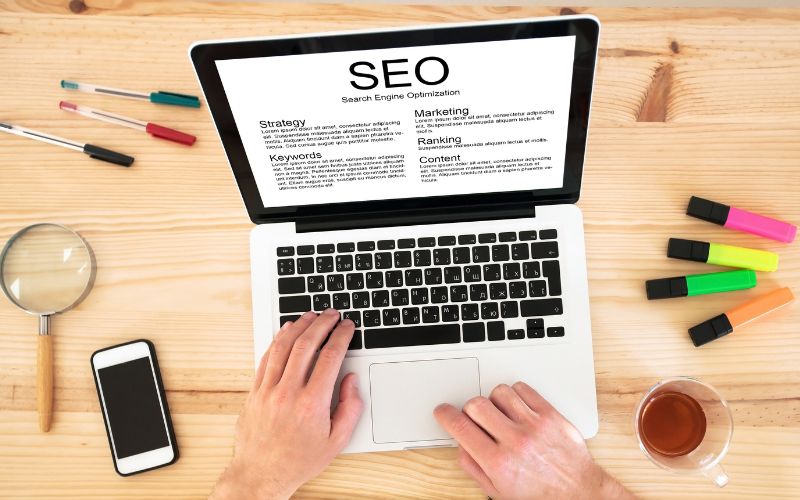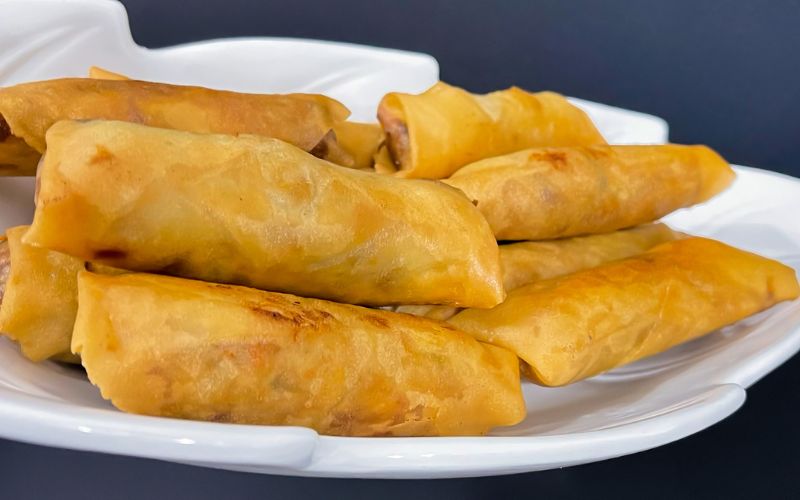10 Expert Web Design Tips to Maximizing Your Online Profits
Are you struggling to create a website that looks great and functions effectively? Designing a website that meets your needs and appeals to your audience can be a challenging task, but there are some essential tips you can use to make the process easier.
With the emergence of technology, managing a business has become increasingly convenient. However, to establish a strong online presence for your business, investing in web design is crucial. Your website serves as a virtual representation of your company in the digital realm.
The significance of your website cannot be overstated as it serves as the very core of your online presence. It is the initial point of contact for potential customers and therefore, its design plays a crucial role in shaping their impression of your business. A poorly designed website can easily deter leads, who may turn to your competitors in search of a better alternative.
Conversely, a professionally designed website has the potential to captivate and engage your target audience, drawing them in and keeping them interested. By investing in an effective web design, you can maximize your lead retention and ultimately increase your conversion rates, leading to greater success for your business.
To generate revenue from your business website, it is important to have an effective web design. Despite receiving good traffic, a poorly designed website can still fail to make a profit. A visually appealing and user-friendly website can attract and retain potential customers, while a confusing or unattractive design can cause them to turn to competitors. A well-designed website can also establish credibility and trust with customers, encouraging them to engage with your business and make a purchase.
Here are ten tips for improving your web design:
1. Create a Clean and Simple Homepage
A clean and simple layout is essential for a modern and professional-looking website. When people land on your website, they usually start with the homepage to get a sense of what your business is all about. That’s why it’s super important to make a good first impression with a well-designed and easy-to-navigate homepage.
To make sure your homepage is interesting and engaging to your audience, try using more visuals and fewer walls of text. Visual elements like images, videos, and infographics can help keep your visitors interested and encourage them to explore your site further.
When it comes to designing your website, your homepage is the star of the show. It’s the most important page on your site, so you want to make sure it’s easy to navigate and find the information your visitors are looking for. Try to keep things simple and straightforward, and avoid using too many fonts, colors, or GIFs that could distract from your main message.
Finally, keep your content organized and easy to scan by using short paragraphs and bullet points. This makes it more likely that visitors will actually read what you have to say and stick around to learn more about your business. With these tips in mind, you can create a simple yet effective homepage that will make a great first impression on your visitors.
2. The website should be Organized Navigation
When you’re designing your website, you need to prioritize navigation. Think of it like a map that guides users to the key areas of your site, such as your services, products, or blog. A disorganized or confusing navigation interface can be a major turnoff for visitors.
Overstuffing your navigation, using vague or confusing hypertext, and lacking organization can make it hard for users to find what they’re looking for. Your website’s navigation should be easy to use. Use drop-down menus and clickable buttons to make it easy for users to find what they’re looking for.
If visitors can’t find what they need on your site, they’re likely to leave and find a competitor with a better user experience. That’s why it’s crucial to improve your website’s navigation by streamlining your content, using a clear navigation hierarchy, and making sure your site is responsive across different devices.
When designing your navigation, simplicity is key. Create broad headings with specific subheadings to keep your site organized and help visitors find what they’re looking for. Clear headers and categories can also help separate sections and make navigation easier.
Consider including a search bar to further simplify the user experience. By creating a clear layout and making navigation easy, visitors will be able to find the information they need and move through your site with ease.
3. The website should be Responsive (Mobile friendly)
To stay competitive, businesses must ensure their website is mobile-friendly, both in design and functionality. Websites need to be optimized and designed to look great and work effectively on all devices, including phones, tablets, and phablets.
Optimizing images for mobile use, such as converting PNG to SVG, can help ensure proper image display on mobile devices. More than half of all website traffic comes from mobile devices, so it’s crucial to optimize your website for mobile users.
Make sure your website is responsive and loads quickly on all devices. Users view a website differently depending on their device, whether it’s a mobile phone or desktop. It’s critical to design the website to fit the user’s device, ensuring a seamless and engaging experience.
If a website appears as the desktop version on every device, users will struggle to navigate the site due to small text and links, requiring them to zoom in to see everything. Designing a website specifically for mobile and tablet users ensures they have a seamless experience and can enjoy their time on the site, leading to longer engagement, regardless of the device they use.

4. Use Keyword Focused Headlines
Your readers’ attention is first drawn to your homepage headline. Its content must include SEO keywords and strong descriptive language to immediately grab their attention and convey that they are in the right place.
Keywords inform readers that your site is relevant to their search and also assist search engines in understanding and ranking your website. Meanwhile, descriptive language persuades visitors to stay on your site instead of visiting competitors by highlighting your company’s unique selling points.
Your headline and other website content must incorporate descriptive language that reflects your brand and speaks directly to the specific needs and pain points of your target audience. This approach should be employed consistently throughout your website.
5. Leverage Visual Hierarchy
Web designers can leverage visual hierarchy by using principles such as size, color, and proximity to highlight the importance of certain elements or content on a website. To incorporate visual hierarchy into your web design, you can use tips like emphasizing important content with larger font sizes and brighter or accent colors.
Placing related elements in close proximity helps users make connections between products and services, while using white space draws attention to images, headlines, and other content. Choosing similar colors to highlight related concepts can also help visitors connect ideas across a web page or entire website.
By understanding color theory, you can select the most effective colors to identify product categories or highlight deals and sales. While visual hierarchy can be a complex concept, incorporating these tips into your web design can help you create a clear and engaging user experience.
6. Use the right Stock Images
We recommend utilizing original photography on your website to showcase authenticity. However, in cases where that is not feasible, there are techniques to help choose the appropriate stock photos. While stock photos can save time in creating visual content, many websites end up using clichéd and overused images that can harm their credibility.
Users tend to associate negative experiences with such images, reducing trust and creating obstacles in the conversion process. Therefore, it is advised to avoid cheesy stock photos, such as people high-fiving with exaggerated smiles, groups staring at the camera, or suited people jumping in the air.
Incorporating visual elements like photos, videos, and infographics can enhance user engagement and break up the monotony of text-heavy pages. Among these, videos have a greater impact on the audience and are ten times more likely to be interacted with than text. Increased engagement through visual elements can lead to more conversions for your business, making it a valuable strategy for generating leads.
7. Scatter your CTA Buttons
To guide visitors to conversion, web designers should strategically place call-to-actions (CTAs) on their site, including in the top right of the navigation, below sections that require action, and at the bottom of website pages. Effective CTAs use action-oriented language and are typically in a contrasting color. For example,
- Buy Now
- Sign Up
- Book a Free Demo
- Get Offers are all good examples of strong CTAs.
However, placing only one CTA button at the top or bottom of each page can cause missed opportunities for lead capture and revenue generation. Visitors may scroll past the initial CTA to learn more, and if they cannot find another CTA, they may leave the site without converting.
To avoid this, it is smart to include CTA buttons at regular intervals throughout the page, without overwhelming the visitors. Including two to five CTA buttons will give visitors an adequate opportunity to convert without bombarding them with too many options.
Furthermore, landing pages should encourage users to take a specific action that benefits business goals, such as calling the company, signing up for a service, buying a product, or downloading a whitepaper. This invitation to take action should be noticeable and clear, whether it is a button, a link, or a clear statement.
8. Avoid Carousels, Sliders, Tabs, and Accordions
Companies often seek to have unique elements on their websites to showcase their brand attributes like innovation and creativity. However, they may be mistaken in thinking that having unique features is a necessary component of effective web design. Some companies try to incorporate carousels, sliders, tabs, and accordions into their web design, but research shows that these features can be ineffective.
Studies have found that the first slide on a carousel typically receives almost 90% of the clicks, while the rest of the slides are often ignored. Similarly, tabs and accordions may also be ignored, along with sliders and carousels. To make web design more effective, it’s best to avoid using carousels, sliders, tabs, and accordions altogether.
9. Pricing Should be Visible
It recommends displaying pricing prominently on the homepage, creating a separate pricing page, using clear and concise language. By implementing these tips, businesses can improve the user experience and increase conversions on their website.
The idea is that if you want to make more money from your website, you need to make your pricing information easy to find. This means you should avoid hiding your prices or making visitors jump through hoops to find them. Instead, put your pricing front and center, ideally on your homepage. By doing this, you make it easier for visitors to understand what you offer and how much it costs, which can lead to more sales and revenue for your business.
10. Incorporate SEO Best Practices
To ensure your website is visible to potential customers, it’s important to bring in free organic search traffic rather than relying solely on paid ads. This means ranking well on search engines like Google, which have algorithms to determine the relevance and authority of your site.
Search engines use three methods to rank sites: crawling, indexing, and ranking. Crawling involves finding your site through links from other sites, so it’s important to have links to your site on as many outside websites as possible. Once your site is found, it’s indexed and analyzed for content, including keywords, freshness, relevance, links, and multimedia.
It’s based on relevance and authority, which can be established through having plenty of relevant content, like individual articles on different aspects of a specific topic. Authority is also established through the size of your site, its traffic, and how many other well-respected sites link to it. By optimizing your site with small business SEO tools, you can improve your search engine ranking and bring in more organic search traffic.
Regularly testing and optimizing your website is essential for improving its performance. Use analytics tools to track user behavior and make changes to improve your website’s performance. By using these essential tips, you can create a website that looks great and functions effectively. With a little effort and attention to detail, you can design a website that meets your needs and appeals to your audience.

Bottom Line
To improve the user experience on your website, you can always do something. Whether you’re an affiliate blogger, an emerging SaaS provider, or an established e-commerce powerhouse, there’s always something you can do to make your website visitors happier.
A research revealed that a user’s attention span is limited to just 8 seconds. Hence, the initial few seconds of a user’s interaction with your website are crucial. In order to increase conversions, it is important to grab their attention during this small window of opportunity. Here are some tips to help you achieve that:
- Create a prominent headline that succinctly conveys the benefits of your product.
- Use eye-catching images that showcase the main purpose of your page and highlight the primary call-to-action.
- Design a big, simple, and easily comprehensible call to action button.
- Use persuasive language to make your offer more compelling.
- Incorporate a hover effect on your buttons, such as changing the color or cursor, to increase the user’s inclination to click.
Incorporate recognizable colors, logos, and design elements of your business into your page to reflect your brand. Your website should be an extension of your brand and the colors and designs you choose should make your target audience think of your brand. Building brand recognition through your website’s design can create a sense of association with your business.
Implementing these tips can bring significant changes that improve your website’s performance, experience, and customer conversion rates. Once you’ve put some of these tips in place, you might consider a website redesign, which can seem like a daunting project. However, you’re not alone in thinking this way. Getting ahead of the game with a website redesign conversation in your organization will make you feel more confident about what needs to be done.





cheap androxal lowest price viagra
get androxal buy for cheap
cheap enclomiphene generic alternative
enclomiphene without a perscription canadian
discount rifaximin generic available
order rifaximin buy online usa
discount xifaxan american express canada
cheapest buy xifaxan canada medicine
how to order staxyn generic free shipping
buying staxyn generic how effective
buying avodart generic london
buy avodart canada low cost
online order dutasteride cheap from canada
how to order dutasteride us pharmacies
cheap flexeril cyclobenzaprine australia cheap
cheap flexeril cyclobenzaprine generic extended release
get gabapentin canada how to buy
discount gabapentin generic overnight delivery
online order fildena without rx online
how to buy fildena generic drug india
buy itraconazole buy sydney
generic itraconazole canada
kanadská lékárna tht prodává kamagra vyrobené v indii
obecný kanada vancouver kamagra
prix kamagra
commander kamagra en ligne sans ordonnance